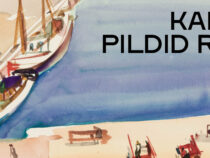On 10 November, the Tartu Art Museum will open an exhibition of one of the most remarkable artists of Tartu in the 19th century: “Julie Hagen-Schwarz. The First Female Artist of Estonia”. Hagen-Schwarz can be given such a title because she attained academic recognition and professional success in the local art world.
She played an important role in the art life of Tartu, organised exhibitions and painted portraits of her contemporaries. The exhibition curator Merli-Triin Eiskop explains: “Despite many restrictions that the society of that era set on women, in 1858 Julie, a Baltic-German from Tartu, became one of the first women to be named an academician by the St Petersburg Academy of Art. This happened a couple of years earlier than the first Estonian male artist, Johann Köler, received similar recognition.” Despite this, there have been only a handful of exhibitions of Hagen-Schwarz’s oeuvre: the first one 29 years ago, also at the Tartu Art Museum.
The background of the exhibition is revealed by the art historian Linda Nochlin’s 1971 article “Why Have There Been No Great Women Artists?”, which is considered one of the seminal texts of art history. This article presents the different institutional hurdles that created a historical situation in which only a select number of female artists found significant positions in the art world and important places in art history. Since its publication, many art historians have dedicated themselves to bringing forgotten female artists, whose works had previously been seen as having little significance, into the general art historical consciousness.
“Using a similar logic, Julie Hagen-Schwarz can be highlighted in the Estonian art of the 19th century,” Eiskop adds. “Her accomplishments and role in our local art history were significant, which means it would be improper to consider her to be merely a successful female artist from that era.” Hagen-Schwarz lived and studied in Germany and Italy, travelled in Siberia and Western Europe and received national recognition for her work. It is, however, important that until the end of her life she continued to paint and live in Tartu.
The exhibition is mainly based on collections of the Tartu Art Museum and the Art Museum of Estonia, but also contains works from private collections and the University of Tartu.
The exhibition “Julie Hagen-Schwarz. The First Female Artist of Estonia” will remain open until 15 April 2018.
Curator: Merli-Triin Eiskop
Designer: Angelika Schneider
Exhibition team: Nele Ambos, Liis Haasma, Joanna Hoffmann, Mare Joonsalu, Margus Joonsalu, Hanna-Liis Kont, Heiti Kulmar, Kadri Mägi, Kristel Sibul, Ago Teedema, Kristo Tamm, Urmo Teekivi and Piia Õunpuu
Thanks: Tiina Abel, Mirko Aus, Kalev Klais, Kristjan Nagla, Meelis Olev, Signe Siim, Peeter Talvistu, Tiiu Talvistu, the University of Tartu Hospital, the University of Tartu Art Museum, and the Art Museum of Estonia
In the coming month a catalogue containing articles about Julie Hagen-Schwarz’s life and oeuvre and reproductions of the exhibited art works will be published. The catalogue will be in Estonian, English and German.
Compiler and editor: Merli-Triin Eiskop
Designer: Angelika Schneider
Authors: Tiina Abel, Christin Conrad, Anja Wilhelmi and Kristiina Tiideberg
Translators: Peeter Talvistu, Florian Marcus and Anna Caroline Haubold
The exhibition will be accompanied by an educational programme for different age groups.
Additional information: Kristel Sibul, kristel@tartmus.ee, 5881 7801.
The exhibition and the publication are supported by the Cultural Endowment of Estonia.
Additional information:
Piia Õunpuu
Tartu Art Museum communications specialist
+372 56665664
piia@tartmus.ee




